We searched the market for the best snowboarding headphones and found out what makes them so great.
| Name | Type | Battery Life | IP Rating | Price |
|---|---|---|---|---|
| Alta Wireless Ski Helmet Bluetooth Headphones Best Overall | Helmet headphones | 10 hours | IP45 | BUY |
| Outdoor Tech Chips 2.0 Strong Runner-Up | Helmet headphones | 10 hours | IP45 | BUY |
| OutdoorMaster Helmet Headphones Best Budget | Helmet headphones | 15 hours | IP45 | BUY |
| AfterShokz Aeropex Best Open-Ear | Bone conduction headphones | 8 hours | IP67 | BUY |
| Bosttor Bluetooth Beanie Headphones with Light Best for Night Skiing | Beanie headphones | 10 hours | IP54 | BUY |
| GoldWorld Beanie Headphones Best Beanie Headphones | Beanie headphones | 17-25 hours | N/A | BUY |
| JZAQ Helmet Headphones Best Battery Life | Helmet headphones | 50 hours | IPX7 | BUY |
| UClear Digital Pulse Best Wired | Helmet headphones | N/A | N/A | BUY |
How to Choose the Best Snowboarding Headphones
Snowboarding remains to be one of the most popular seasonal activities today. It is a very thrilling activity that brings out the adrenaline in everyone. And whether you hit the slopes regularly as a hobby or a couple of days a year with your family, having a good pair of snowboarding headphones on while you’re out there has a lot of unsung benefits
Aside from the typical snowboarding gears, headphones have paved their own way to the hearts of casual and professional snowboarders. Headphones, in general, protect your ears from the cold and also possible hearing damage. On top of that, snowboarding headphones will enable you to set the mood and play your pumped-up songs without distracting you too much.
Despite its numerous benefits, choosing the best snowboarding headphones is not as easy as it sounds. These are special headphones made specifically for this activity so there are a lot of factors that play around this decision. All in all, you have to make sure that you’re buying something proper, high quality, and will not put you at any risk.
Let’s discuss the things you need to consider and the things you need to see when buying these headphones.
Can you wear them with your helmet?
It is no secret that helmets are an absolute must when snowboarding. For olympiads and regular snowboarders who go around at 70-100mph, helmets are not optional. However, leisure snowboarders and skiers who ride way below those speeds are still recommended to wear headgear.
No matter how good or bad you are at this activity, there is always a chance of you falling.
Even the slightest bump can be devastating at times, so it is better to be safe than sorry.
However, snowboarding headphones are usually tight-fit. This ensures that it won’t be that easy to take off despite constant wind and movements. That’s why helmets and your regular type of headphones are not meant to be used together.
Forcing to use one will put too much pressure on your head and ears, and may even break your headphones. This is one of the reasons why snowboarding headphones were developed, so you could wear them with your helmet and other headgear.
Fortunately, you still have several designs to choose from:
- Beanie headphones: These headphones, as the name suggests, come in the form of a beanie. They follow the same principle behind sleep headphones where ultra-thin speakers are kept inside a fabric compartment. They’re great for winter and can be used for snowboarding as well.
- Helmet headphones: These ultra-thin headphones were made as such to fit between the small space separating your ears and your helmet. Despite their size, most helmet headphones are very durable with very easy or even hands-free controls.
- Bone conduction headphones: Bone conduction headphones are special in a way that they allow more spatial and external awareness even if you’re listening to music, per se. This makes it a great tool for those who want to hear music but still need to hear what’s going on like in the case of soldiers, cyclists, and of course, snowboarders
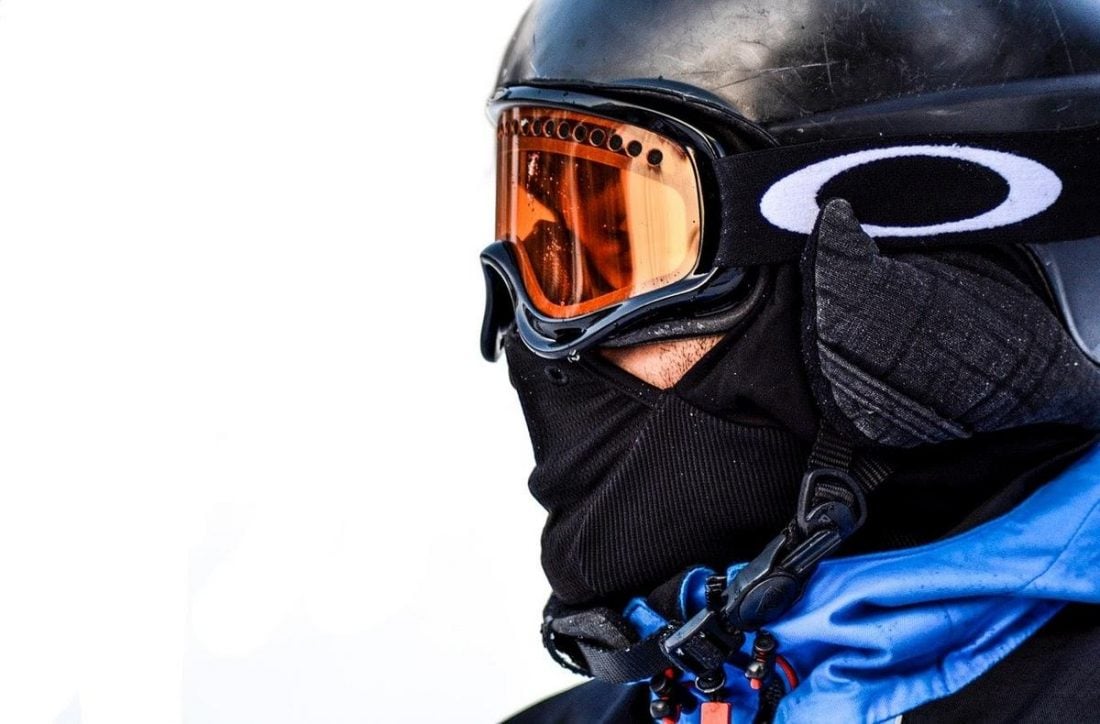
Weather resistance
Snow and electronics don’t go well together. The extremely cold temperature may cause damage to your batteries and the condensation that comes with the cold is another point of concern. On top of that, snow is essentially water so it getting inside your average headphones may spell disaster.
However, all these risks will simply be negated with the use of weather-resistant headphones.
When we talk about weather resistance, we talk about IP ratings. The International Electrotechnical Commission (IEC) developed the IP rating system to standardize the measurement of protection against solid and liquid materials in electronics.
IP ratings are often composed of two numbers. The first number indicates the device’s resistance to solid foreign objects, while the second number is for tolerance to water. The numbers correspond to a particular level of resistance.
For example, a device with an IP65 rating has a level 6 resistance to solid foreign objects and level 5 water resistance. Meanwhile, an “X” means that no tests have been conducted to find out the level of resistance in the particular area such as in the case of IPX5 devices.
Some headphones fare better than others in extremely cold environments. In general, these headphones are those rated IP65. IP66, and IP67. These ratings are considered to be waterproof already. Basically, the higher the IP rating, the better.
Will they stay in place?
Another thing to consider is whether the headphones will stay in place. When snowboarding, people tend to slip, slide, swerve, and even flip, so the headphones must be able to withstand that.
Headphones falling out of place may sound harmless but, in truth, it may pose some dangers. Any form of sudden misalignment may distract you midair or mid-slide. If you lose focus on what you’re doing, you’re putting yourself at risk of accidents. You’re better off having the headphones fall out and hope that it’s true to its IP rating to survive.
The headphones should fit snugly but should still provide a little bit of comfort. Discomfort may also cause distractions and accidents, consequently. In order to make sure that the headphones would stay on, you have to take note of the size and adjustability of the item.
The size of the headphones differs from one manufacturer to another so be sure to actually check the dimensions. The best way to see if the headphones fit well is by trying them on before buying. However, if you’re buying online and won’t be able to test it, you could rely on the adjustability of the headphones.
Can you still hear your surroundings?
Spatial awareness and ambient sound are extremely important when you’re snowboarding. Being able to hear and sense your surroundings properly is a safety precaution that you shouldn’t be skipping at all.
This is exactly why noise-isolating headphones are not at all recommended when snowboarding. Blocking out ambient noise means blocking out your surroundings, thus, putting you at risk of many accidents.
For example, in a crowded skiing area, not being able to hear the speeding people behind you surely wouldn’t be good. Think of it as if you’re driving and you’re not hearing the honks and sirens of cars behind you.
With that said, an important characteristic of snowboarding headphones is the ability to still let you hear outside of the music. Open ear or open-back headphones are some terms you want to look for. You should also be avoiding in-ear headphones or anything that seals your ears enough to prevent noise from entering your ear canal.
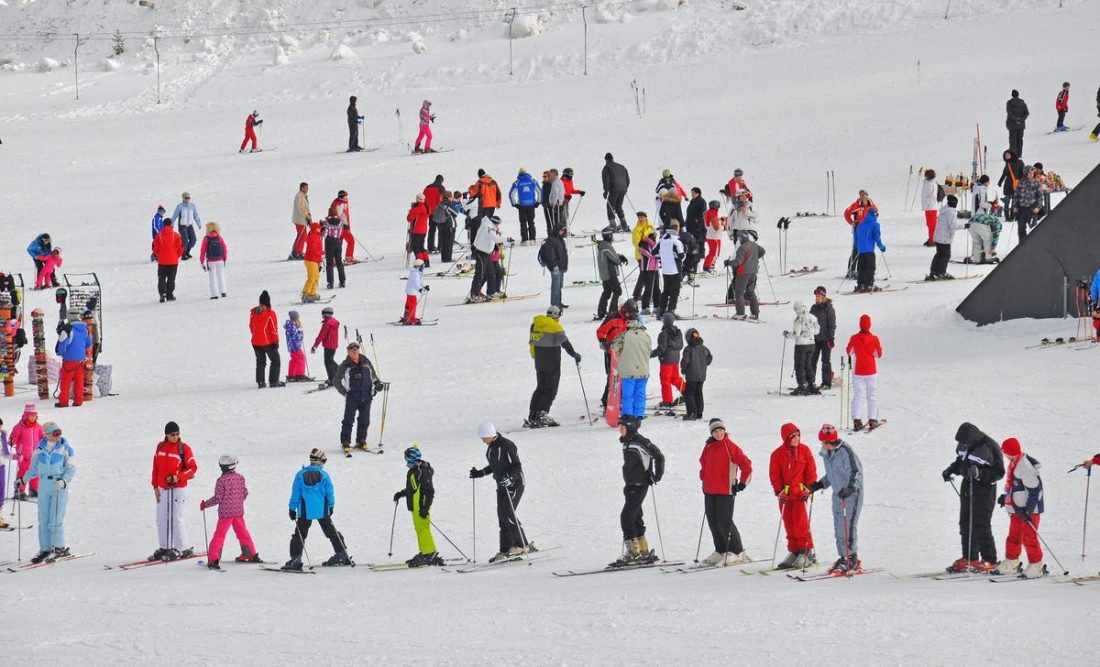
Tactile in-line controls
Snowboarding isn’t exactly the lightest activity out there. Compared to running or working out, snowboarding requires tons of equipment and, not to mention, multiple layers of clothes.
One of the most common problems of people going snowboarding is having to remove their gloves when they have to do something as simple as changing a song. Not only is this a hassle, but it is also dangerous.
Exposing your skin to a cold environment can cause frostbite and other conditions. Plus, having to stop to attend to something in the middle of snowboarding can put you at risk of getting run over.
Fortunately, most snowboarding headphones come with tactile in-line controls. This means that the control buttons are embossed in a way that you’ll still be able to touch them with gloves on. Not to mention, the placing of the buttons is something that you should pay attention to. The easier you can access them, the better.
This simple solution enables users to quickly access and control their headphones without having to pause or fiddle around. With a simple press of a button, you could do things like switch music or even open voice commands for more.
Battery Life
With snowboarding headphones, you’ll always be dealing with battery-powered ones. This is because these are supposed to be wireless workout headphones to avoid any hazards from headphone wires. With that, they need batteries to function and connect.
Snowboarding can last for hours in a single day. All-day passes would usually go about for 14 hours, while 8-10 hours of snowboarding are pretty standard. For those attending lessons, sessions typically last for 2-4 hours.
Moreover, electricity in snowboarding areas is often scarce. This means that you won’t be able to charge as much in between sessions.
With all these in mind, you should be looking at a battery life of 10 hours or around that region. This will ensure that you get a good portion of your snowboarding time with your headphones on.
8 Best Snowboarding Headphones in 2023
Alta Wireless Ski Helmet Bluetooth Headphones
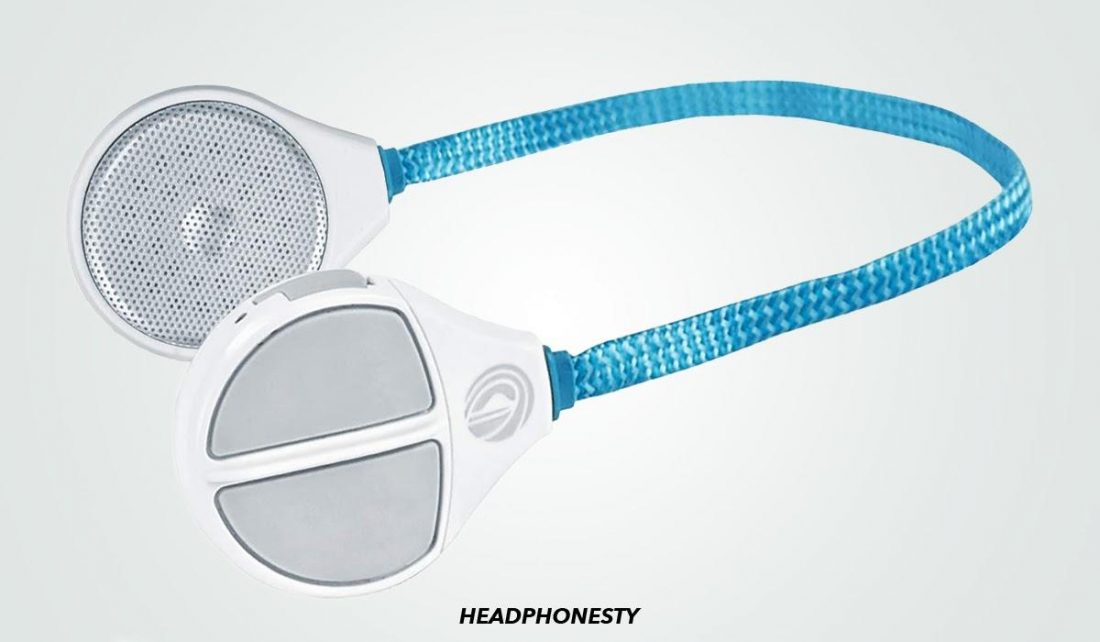
Key features:
- Type: Helmet Headphones
- Connectivity: Wireless
- Battery Life: 10 Hours
- IP Rating: IP45
- Other Features: Hands-Free Calling, Voice Assistant Compatible, Tested to function in low-temperature places up to 24 degrees Fahrenheit (-4 degrees Celsius)
We can call Alta Wireless Ski Helmet Bluetooth Headphones the golden standard or the benchmark when looking for snowboard headphones. This is primarily because it has everything you should look for, and it’s built to last the harsh snowy conditions.
These headphones are compatible with pretty much all audio-ready snow helmets. Whether you’re using a Smith, Poc, K2, Giro, Wildhorn, or any of the top helmet brands, these half-inch thick headphones won’t have problems slotting right in.
Designed by snowboarders for snowboarders, these Bluetooth 5.0 headphones offer a balanced sound with deep bass for 10 hours of playtime. It has an IP45 rating which means that it is protected from objects greater than 1mm and low-pressure water jets from all directions. The fact that it has been tested to last in -20 degrees Fahrenheit (-4 degrees Celsius) settings gives us more confidence in the product’s overall quality.
Other convenient and well-thought design considerations in the Alta Ski Headphones are the oversized buttons and the hands-free mic. These buttons are very hard to miss, and it’s something that you’ll surely appreciate when you’re on the slopes already.
All in all, these headphones are very basic, but they get the job done without mishaps nonetheless. The audio quality may vary from one helmet to another, but they will perform adequately in any case. For beginners and undecided ones, these should be on top of your list.
Outdoor Tech Chips 2.0
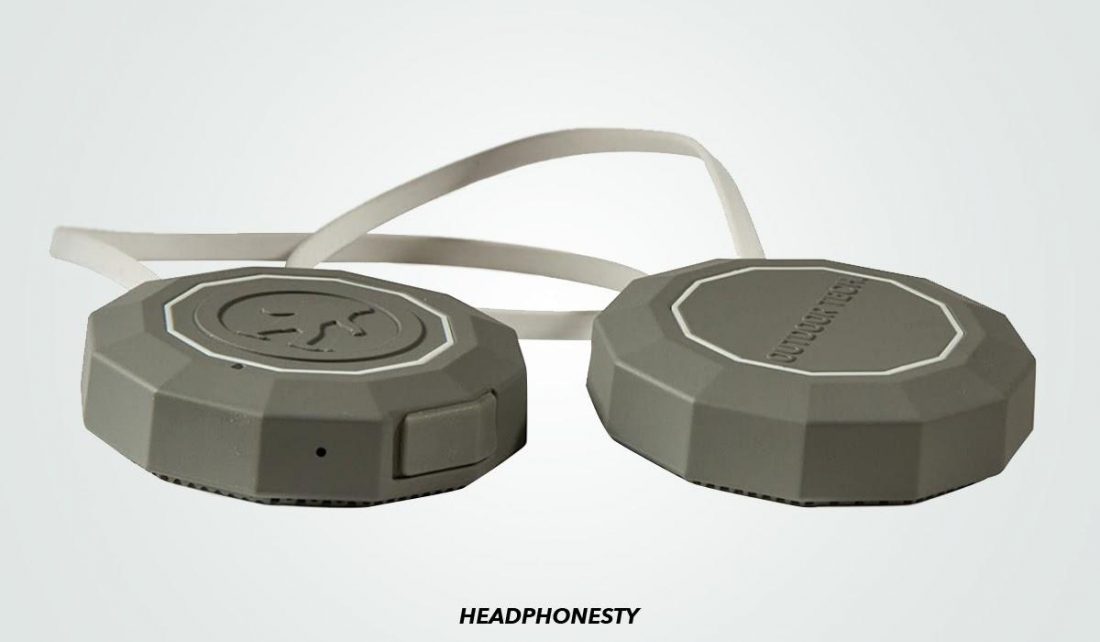
Key features:
- Type: Helmet Headphones
- Connectivity: Wireless
- Battery Life: 10 Hours
- IP Rating: IP45
- Other Features: Sweat-resistant, Tested to function in low-temperature places up to 24 degrees Fahrenheit (-4 degrees Celsius), Glove-friendly controls
Next on the list is the Outdoor Tech Chips 2.0. It has a rather similar set of features as its Atla counterpart above but with one unfortunate difference. Compared to Alta’s Bluetooth 5.0 connectivity, the Chips 2.0 only has Bluetooth 4.0, though. So we’ll put these as a strong-runner up for now.
Despite that, these headphones are still of top-notch quality. It is compatible with pretty much all helmets with audio drop-ins from Bern, Giro, Smith, K2 — you name it! The headphones can run for 10 hours at full battery which is just within the sweet spot we’re looking at for snowboarding headphones.
It is sweat-resistant and has an IP45 rating much like the Atla headphones we mentioned earlier. Another key feature that these two headphones share is their ability to survive in the snow. According to Outdoor Tech, their headphones were also tested to function in low-temperature places up to 24 degrees Fahrenheit (-4 degrees Celsius).
The best word to describe the Outdoor Tech Chips 2.0 sound quality is “clean.” The highs are clear and the bass is big enough. It has massive buttons on each headphone which is really accessible and well-thought. They can be easily pressed on even if you’re wearing your thick gloves.
As mentioned, the only kryptonite of these headphones is its Bluetooth. As expected for an older Bluetooth version, the connection is admittedly faulty and patchy so we’re hoping that Outdoor Tech improves on this for Chips 2.0’s successor.
OutdoorMaster Helmet Headphones
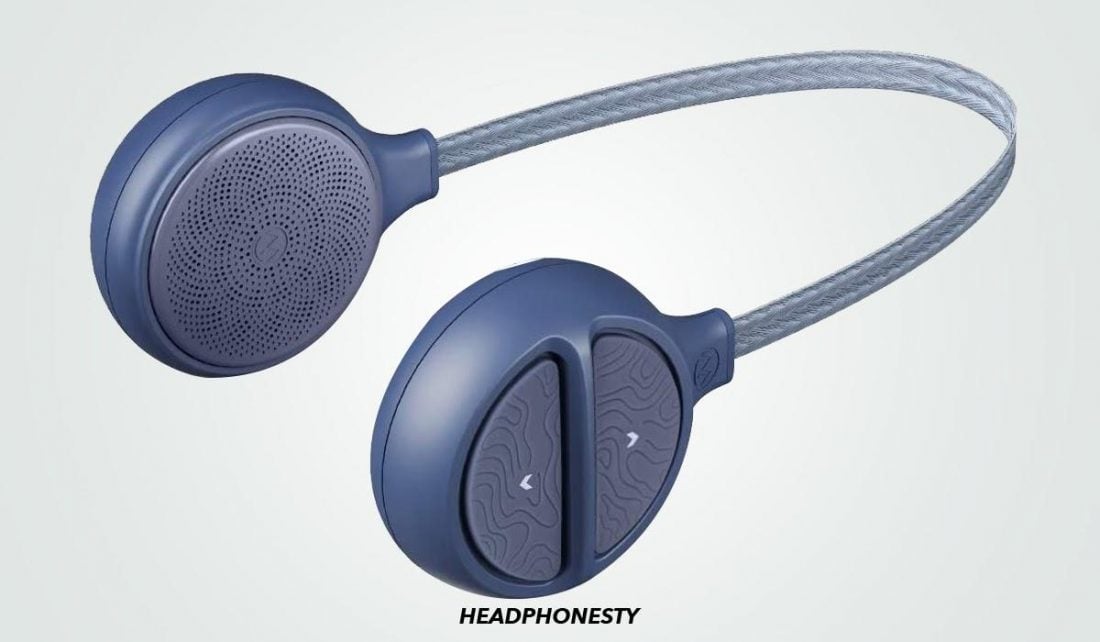
Key features:
- Type: Helmet Headphones
- Connectivity: Wireless
- Battery Life: 15 Hours
- IP Rating: IP45
- Other Features: Multiple buttons, Bluetooth 5.0, Works perfectly at -20°C/-4°F
The best thing about the OutdoorMaster Helmet Headphones is that at roughly $45, you’ll already be getting almost the same features as Atla’s and Outdoor Tech’s. Not only that, but you’ll also be getting a pair of headphones with better battery life! It is one of the cheapest in the market and offers great value for its price.
These headphones run on Bluetooth 5.0 and connect pretty well even in rough conditions. It has an IP45 rating much like the previous two options in this list. To add to that, they have also been tested to work perfectly at -20°C/-4°F.
It has two buttons on one headphone and a single one on the other side. The buttons are conveniently large which is something we would want for snowboarding headphones. Those three buttons could be used to adjust volume, change tracks, play, pause, take calls and use Siri.
The 15-hour battery of these OutdoorMaster headphones is a great leap from the previous two options we presented here. Apart from the price, it’s sold at, this long battery life is probably the biggest advantage of these headphones.
However, perhaps because of its price range, not everything is perfect with the OutdoorMaster Helmet Headphones. It can be a little too thick for some people. This means it not just puts pressure on the head when worn in between helmets, but may also not be compatible with some helmet models.
Despite that, it is the best budget pick here. If you happen to be one of the lucky ones to have this fit properly, then it definitely is something to seriously consider.
AfterShokz Aeropex
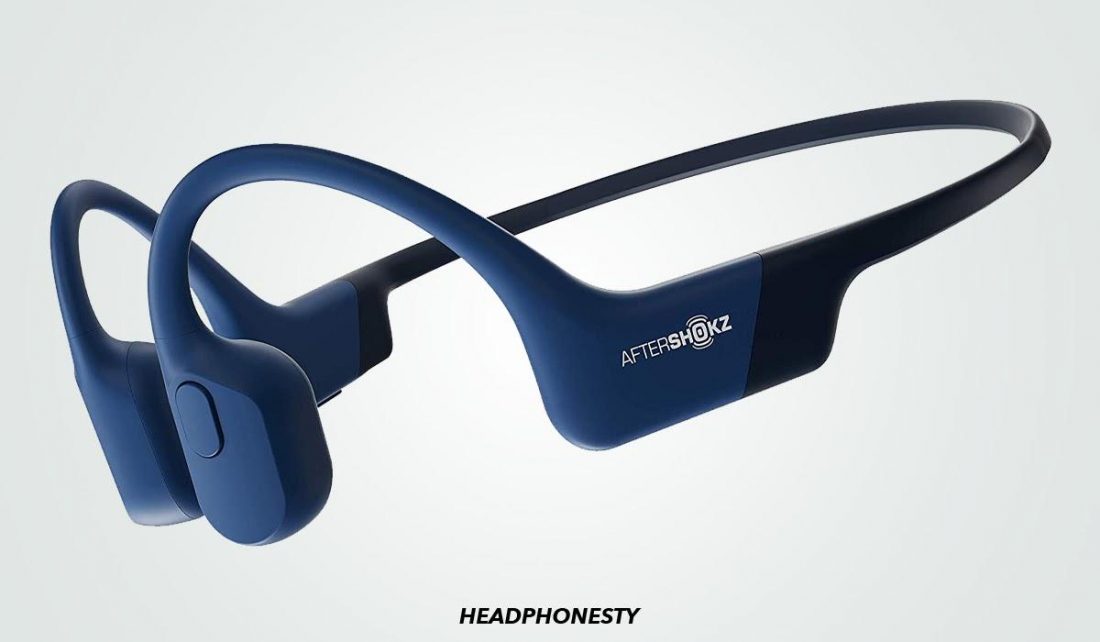
Key features:
- Type: Bone conduction headphones
- Connectivity: Wireless
- Battery Life: 8 Hours
- IP Rating: IP67
- Other Features: Dual noise-cancelling mics, Moisture detection alert, Multifunction button
Aftershokz is one of the global authorities when it comes to bone conduction headphones. And their personal recommendation for skiing and other winter sports is the Aeropex. These are the only bone conduction headphones that made it to this list, which is not that hard to justify. They’re open-ear so it helps people stay aware of their surroundings and their IP rating is also very high.
These sleek headphones feature dual noise-cancelling mics for crystal clear calls. This makes it an attractive pick for snowboarders who happen to be looking for office headphones as well.
Unlike the previous three options we gave you, Aftershokz has a rather small multifunction button. Nonetheless, this button is easy to locate and there’s only one on each side so misclicks won’t be much of a problem.
The Aeropex has an IP67 rating which is the highest-rated one on this list. The IP67 rating means that it can be dropped a meter down into the water for half an hour. Moreover, these headphones also have a moisture detection alert system for safe charging.
Perhaps its biggest drawback is its battery. Even though its 8-hour playback time fits right into the usual snowboarding session duration, we were hoping to have a little more juice to spare. Nonetheless, if you’re looking for a pair of bone conduction headphones that you can use on the road or the slopes, the Aftershokz Aeropex won’t fail you.
Bosttor Bluetooth Beanie Headphones With Light
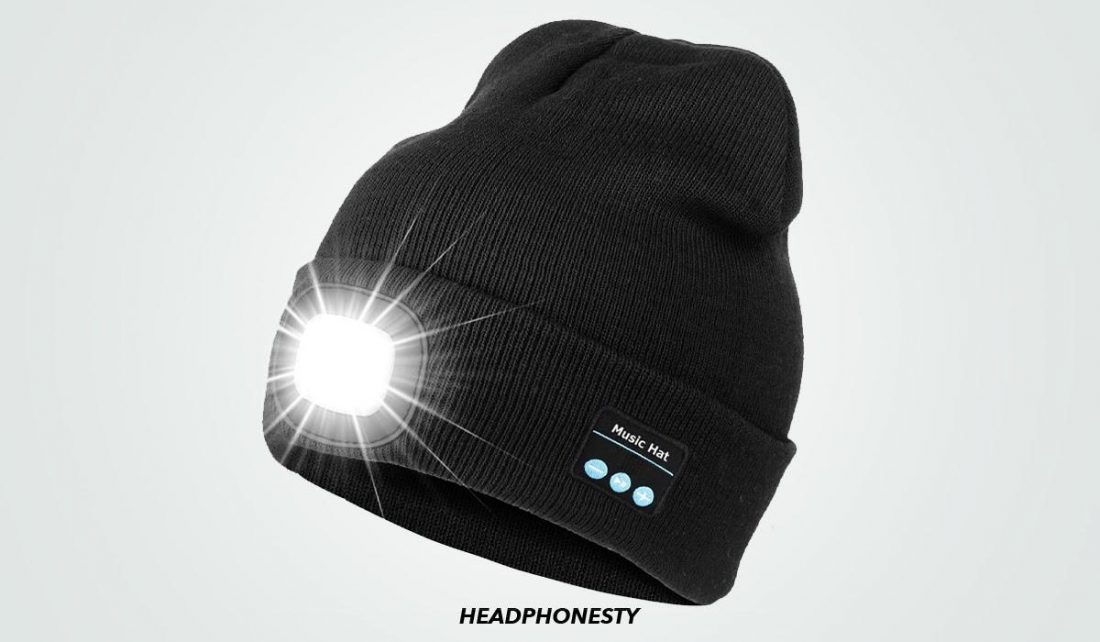
Key features:
- Type: Beanie headphones
- Connectivity: Wireless
- Battery Life: 10 Hours
- IP Rating: IP54 (for LED)
- Other Features: Built-in LED light, Side control panel, Washable
The Bosttor Bluetooth Beanie Headphones is one of the two beanie headphones that made it to this list. This one has a built-in LED light panel that has three brightness settings. The beanie itself is very warm and comfortable to wear which makes it perfect for slow snowboarders.
These headphones are unique in their own way compared to the other headphones we featured here so far. They are beanie headphones which means that it is made out of ultra-thin speakers slotted inside a custom-made beanie.
Apart from that, what makes this unique is the fact that it has an IP54 rated LED light panel right upfront. The beanie itself, with the light panel, is washable. Be sure to remove the speakers before anything, though.
The headphones can run for up to a modest 10 hours. It features a side control panel that lets you easily navigate your way, although it might take some time to get used to it. The control panel is a nice touch but it would have been nice to have the buttons a little bigger and more ergonomic.
If you’re looking to try out night skiing or if you’re simply planning to do slow night strolls, these are perfect. They can also be worn under your helmet if you’re actually going snowboarding.
GoldWorld Beanie Headphones
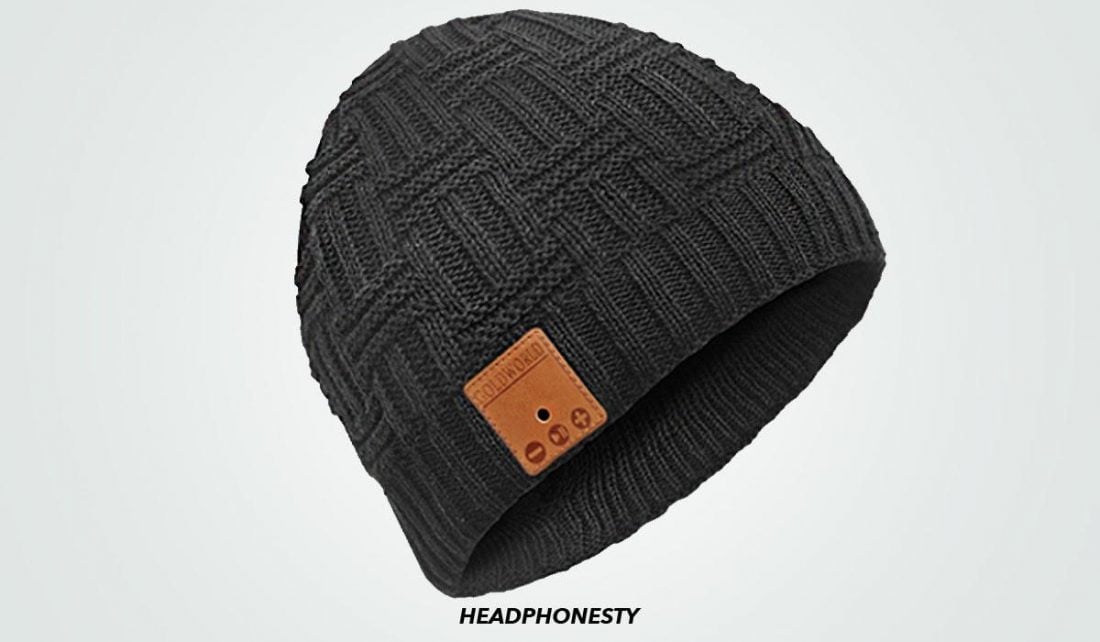
Key features:
- Type: Beanie headphones
- Connectivity: Wireless
- Battery Life: 17-25 hours
- IP Rating: N/A
- Other Features: Double Thick Soft Knit, Side control panel
If you’re looking for beanie headphones that you could bring along for your next snowboarding trip, the GoldWorld Beanie Headphones should definitely be on top of your list. The double-thick soft-knit beanie is a lot more comfortable and stylish than what Bosttor has. You can even wear this under your helmet!
The GoldWorld Beanie Headphones’ strongest point is undeniably its battery. With a 17–25-hour life, this beats the previous options by a mile. The fact that it is really comfortable to wear throughout that period just makes things much better.
These beanie headphones also feature a side control panel with three buttons: volume down, volume up, and pause. Much like its Bosttor counterpart, it would benefit from a larger and more ergonomic set of buttons.
Unfortunately, this is not IP rated which basically means that it is not dustproof nor waterproof. With that said, we can only recommend this perhaps to slow and careful snowboarders.
JZAQ Helmet Headphones
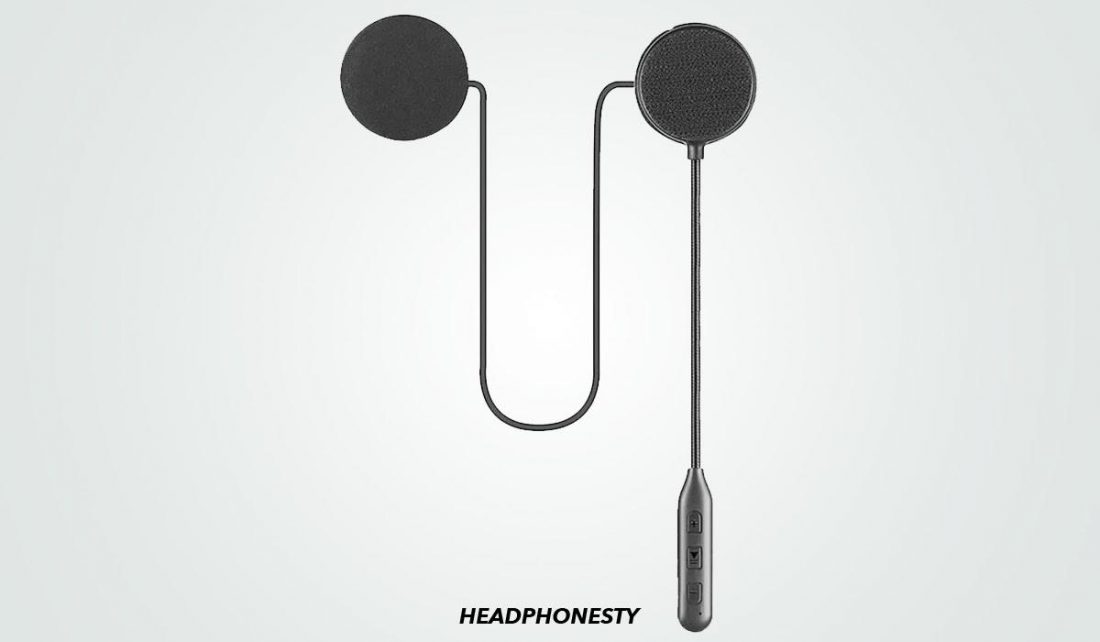
Key features:
- Type: Helmet headphones
- Connectivity: Wireless
- Battery Life: 50 hours
- IP Rating: IPX7
- Other Features: Noise Cancellation, Velcro surface to stick inside the helmet
If you were already amazed by GoldWorld’s 25-hour battery life then the JZAQ Helmet Headphones would drop your jaws. These headphones have a battery life of 50 hours which is five times longer than your average pair of headphones here. If only the headphones fared better in dust proofing, it would have ranked a lot higher.
The 50-hour playback time is attributed to its 900mAh researchable Li-ion battery. These headphones were originally made for long-distance motorcycle travellers. In fact, the back of the headphones is lined with Velcro so that it is attached easily to the inner surface of helmets. But it can fare very well for snowboarders as well.
The JZAQ Helmet Headphones has an IPX7 rating. This means that it has not been tested for dustproofing but it is the top waterproof option together with the AfterShokz Aeropex. Rain and snow should not be a problem for these.
Normally we would praise the headphones for having Noise Cancellation. However, since we’re talking about snowboarding headphones here, we really have to list this down as a disadvantage instead. Noise Cancellation puts the users in harm’s way so we would recommend turning this off.
Other than that, these headphones are pretty great. If you’re someone who stays in snowboarding parks for more than 12 hours, you could really use this pair.
UClear Digital Pulse
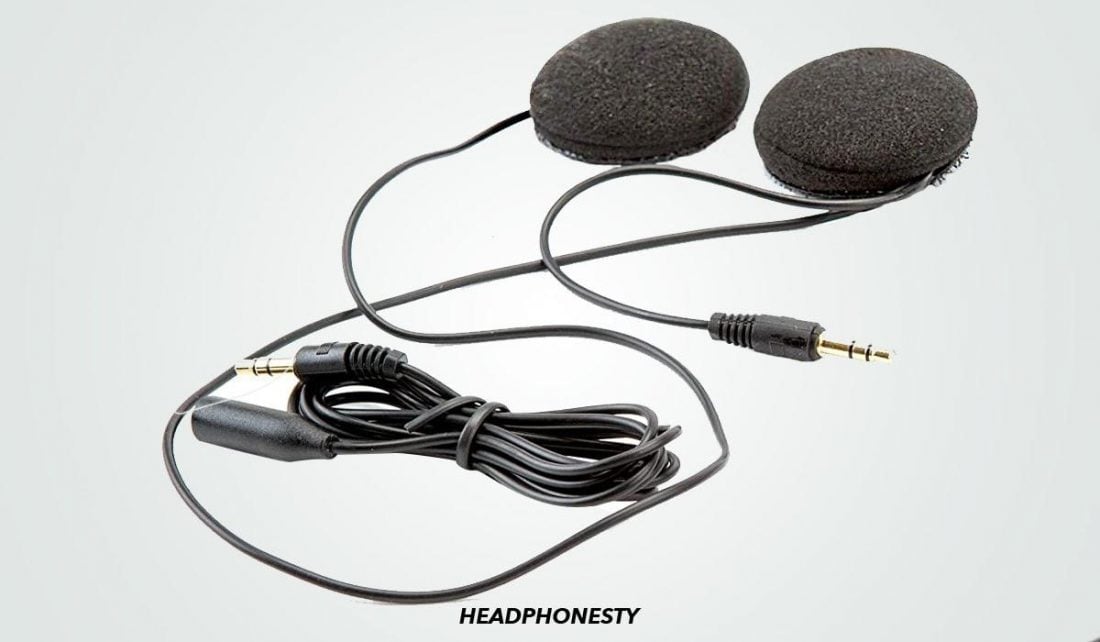
Key features:
- Type: Helmet headphones
- Connectivity: Wired
- Battery Life: N/A
- IP Rating: N/A
- Other Features: Velcro surface to stick inside the helmet, High Fidelity Audio
Lastly, we have the wired UClear Digital Pulse headphones. This is the best-rated wired option that we’ve seen and should definitely be beneficial to those who do not want to be limited by battery life.
Perhaps the biggest advantage of a pair of wired headphones like this one is the sound quality. The UClear Digital Pulse actually has High Fidelity audio so it undeniably has the best sound quality on this list.
Much like the JZAQ Helmet Headphones, these headphones also feature an outer Velcro surface. This allows the headphones to stick inside the helmet and provide music for you.
Nowadays, wireless headphones really are preferred during snowboarding since they allow more movement. However, wired headphones like the UClear Digital Pulse are not entirely pictured. People have been taking wired headphones to the slopes for a long time now and as long as you keep the wires inside your shirt, you should be fine buying this.
